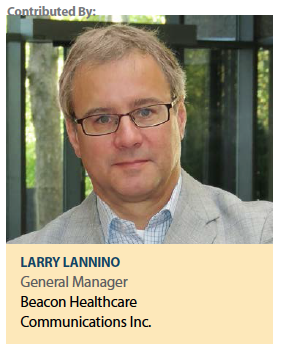 Marketing efforts in the U.S. healthcare system are evolving almost daily. The still-unfolding Affordable Care Act (“Obamacare"), continued consolidation among pharmaceutical manufacturers, and advances in communication tools have all impacted these efforts. The ways healthcare marketers communicate and manage the dialogue with our respective target audiences have also evolved. The days when brand teams could disseminate messages solely through their salesforces — and therefore control that dialogue — are long gone.
Marketing efforts in the U.S. healthcare system are evolving almost daily. The still-unfolding Affordable Care Act (“Obamacare"), continued consolidation among pharmaceutical manufacturers, and advances in communication tools have all impacted these efforts. The ways healthcare marketers communicate and manage the dialogue with our respective target audiences have also evolved. The days when brand teams could disseminate messages solely through their salesforces — and therefore control that dialogue — are long gone.
In fact, even as we try to manage this dialogue, our audiences are taking health care into their own hands and reshaping the dialogue on their terms. Easy access to information on the Web, increased influence of managed markets payers, rising patient empowerment—all of these have taken away from traditional marketer influence.
Declining Autonomy of Healthcare Professionals
Cost-containment pressures increasingly limit the freedom of healthcare professionals to prescribe what they want to whom they want. These professionals continue to play a primary role in ensuring brand uptake, because without their ability to prescribe, the brand would not be used; but their influence has, to some extent, been neutralized by payer and patient audiences.
Greater Influence of Managed Markets Payers — Insurers or Health Plan Networks
The increase in payer influence began in the mid-1990s, with the advent of managed care organizations. Their ability to hold down costs was seen as a benefit to insurance companies and network providers alike. Today, it is very difficult for a doctor to prescribe a brand unless it is on a preapproved formulary; this makes payers a primary target for marketers, with our own value messages, language, and materials.
Rising Patient Empowerment
Until late in the 20th century, patients relied almost entirely on their doctors to treat their illnesses and choose their medications. In fact, physicians used to be perceived as among the most trusted professionals. Today, patients — and their caregivers — have taken more control of their own healthcare management, including the medications they are prescribed. Information readily found on the Web increases patient knowledge. And that knowledge empowers patients to start and even manage the dialogue with doctors on their own terms.
Interconnectivity of Audiences
All these audiences now interact with each other in ways never imagined by marketers even 15 years ago. Patients will ask for a prescription by brand name. Payers determine what treatments should and shouldn’t be used, influencing physician prescribing habits solely based on a value story. And marketers? Oftentimes, we’re on the outside looking in — and trying to get back in, in a way that adds the most value.
How Marketers Can Rejoin the Dialogue While Adding Our Own Value
So how can we better manage the dialogue and increase brand uptake for our clients? It starts with looking at the current relationship dynamics, focusing on patients and their desired outcomes. Patients should be at the center of care. While ensuring that healthcare professionals and payers are part of the decision-making process — informed and in agreement about brand benefits and appropriate use — we must remember that the patient is our end user. To achieve maximum impact with and motivate action by patients, we need to answer three questions:
Why we are engaging them in dialogue?
When is the best moment to engage them?
What is the message at that point, and through what media?
Identifying the Most Appropriate Time to Make an Impact
Finding the most appropriate moment in time is key, considering the myriad of competing messages patients receive before and during treatment. The greatest impact will be made when we can identify the particular moment when a patient is receptive to a message — and is willing to act on it.
Research with patients, caregivers, and healthcare professionals can help marketers identify these key moments. Core messages can then be developed to create an ongoing dialogue that motivates and drives desired actions. Finding that moment in time is key for marketers diving back into the healthcare dialogue if our goal is to better engage with our audiences. (PV)
Beacon Healthcare Communications is independent agency that engages the three key healthcare stakeholders under one roof: consumers, providers, and payers, providing services ranging from direct-to-consumer TV, to CRM, websites, social media, sales presentations, and more.
For more information, visit beaconhc.com.


















